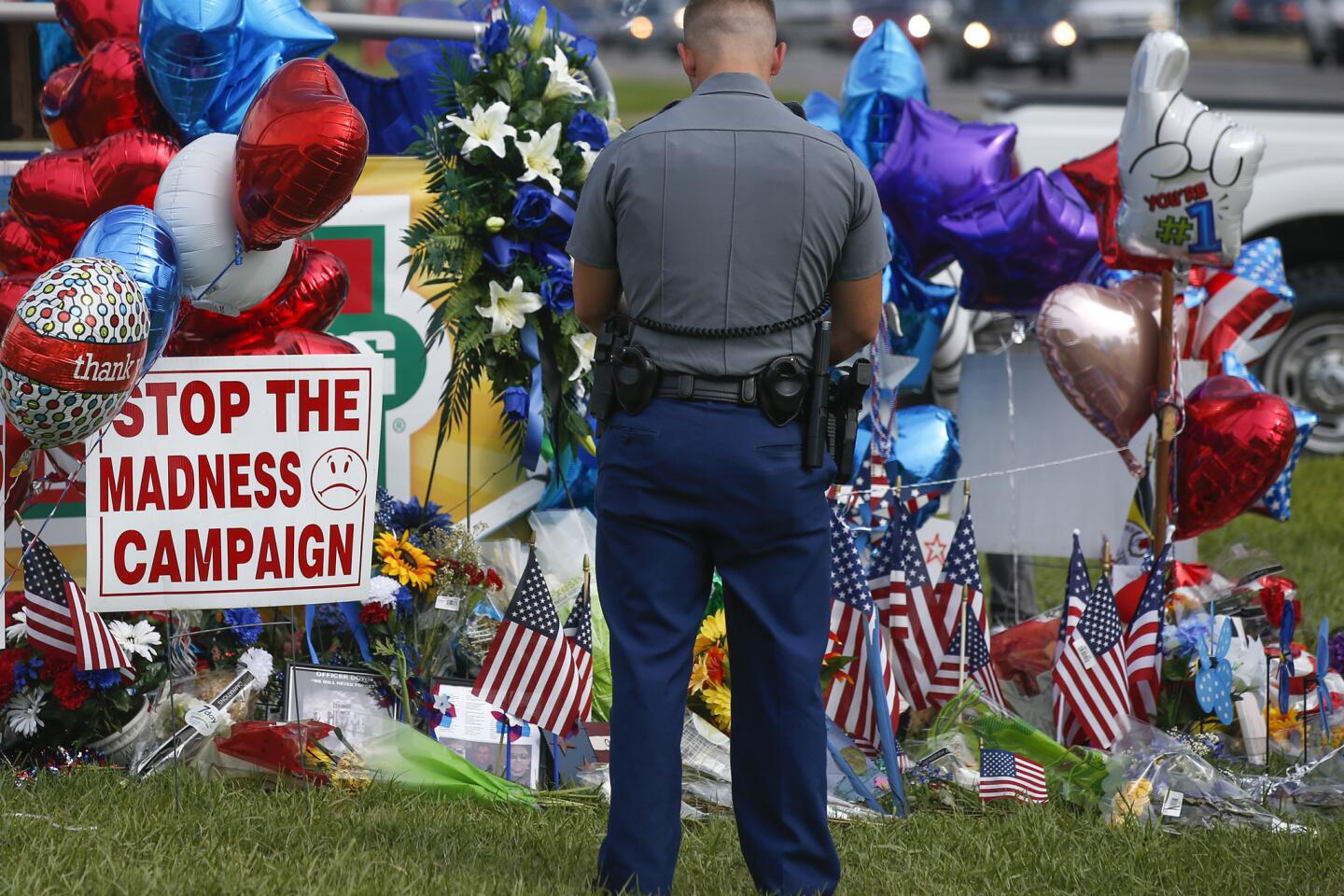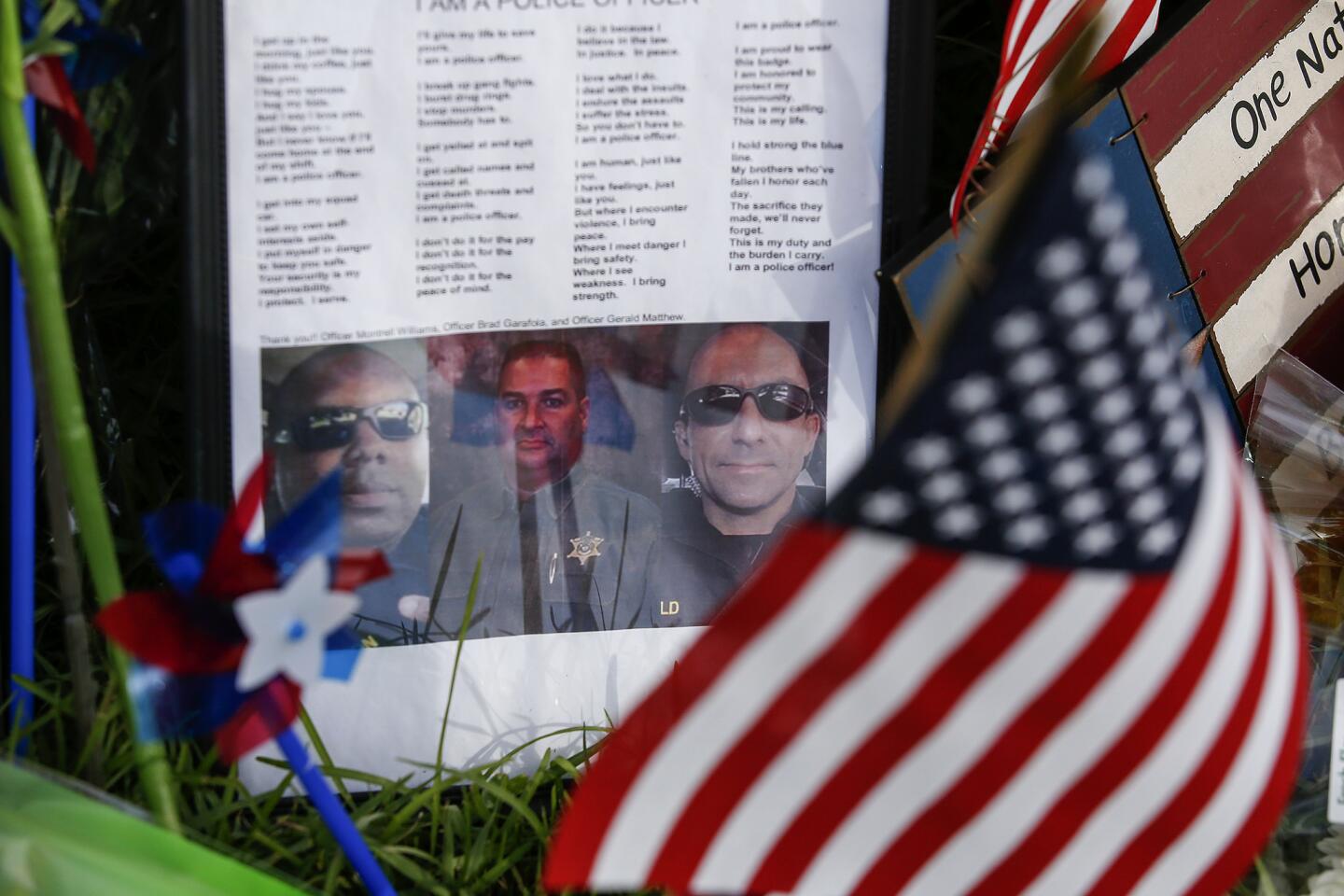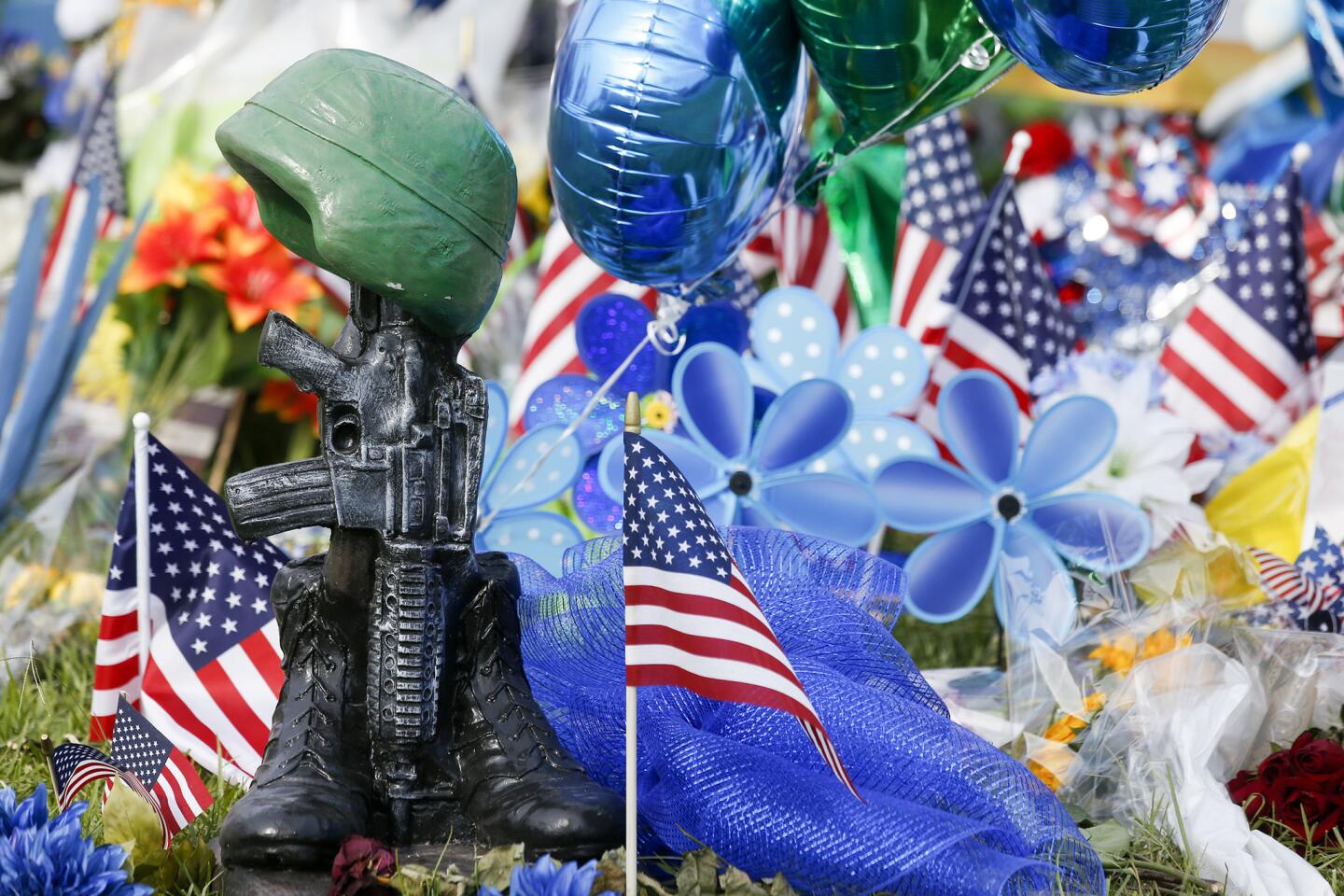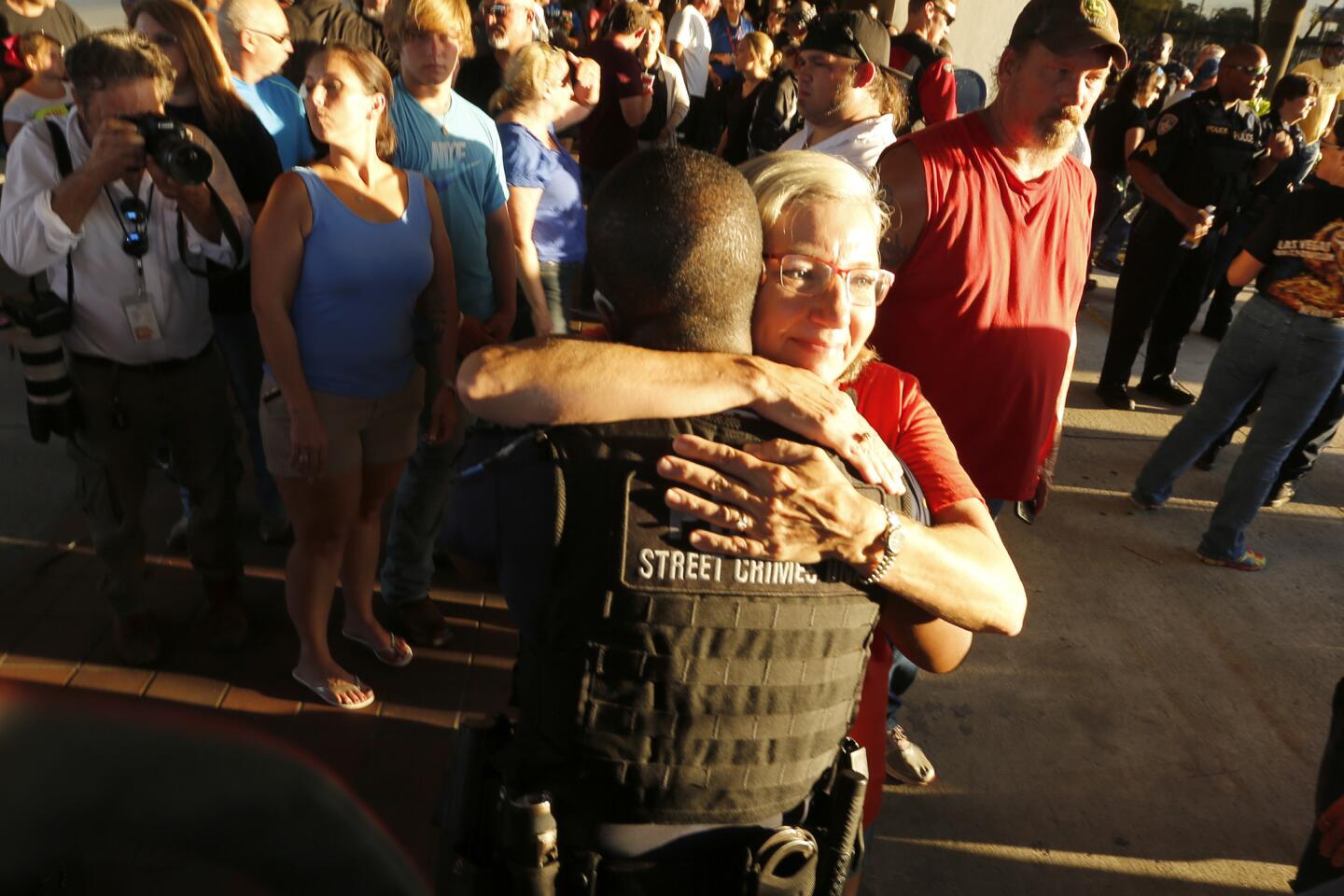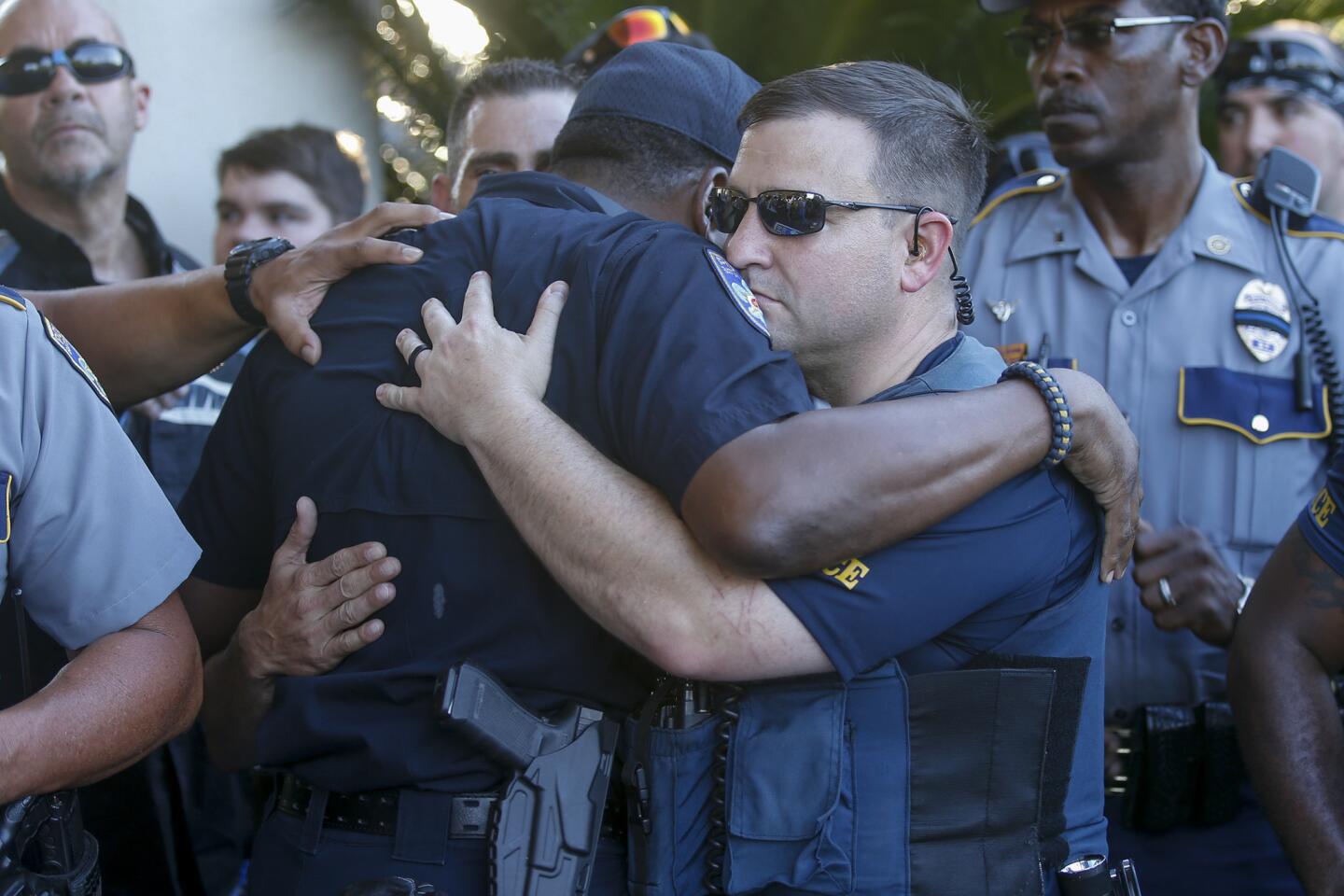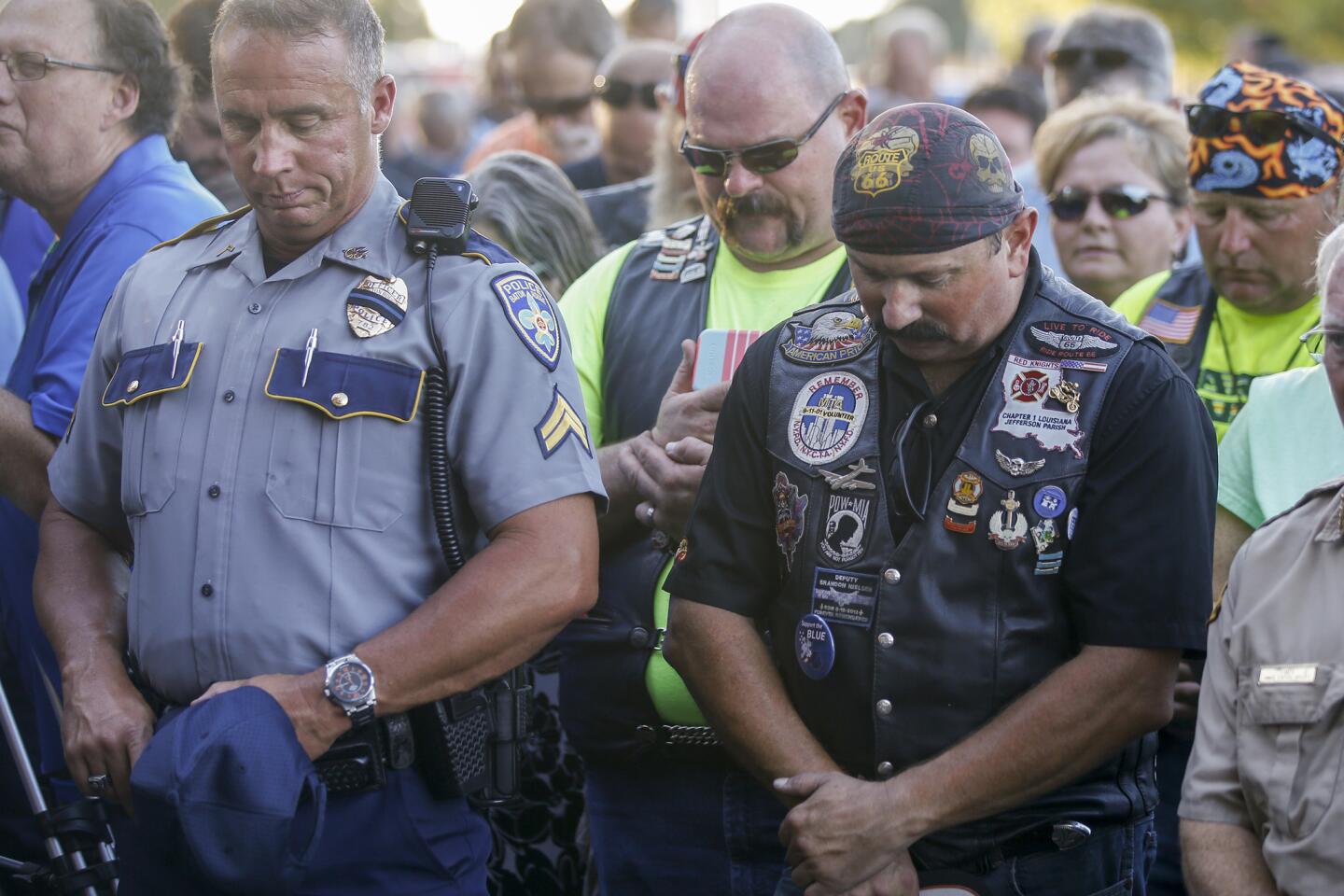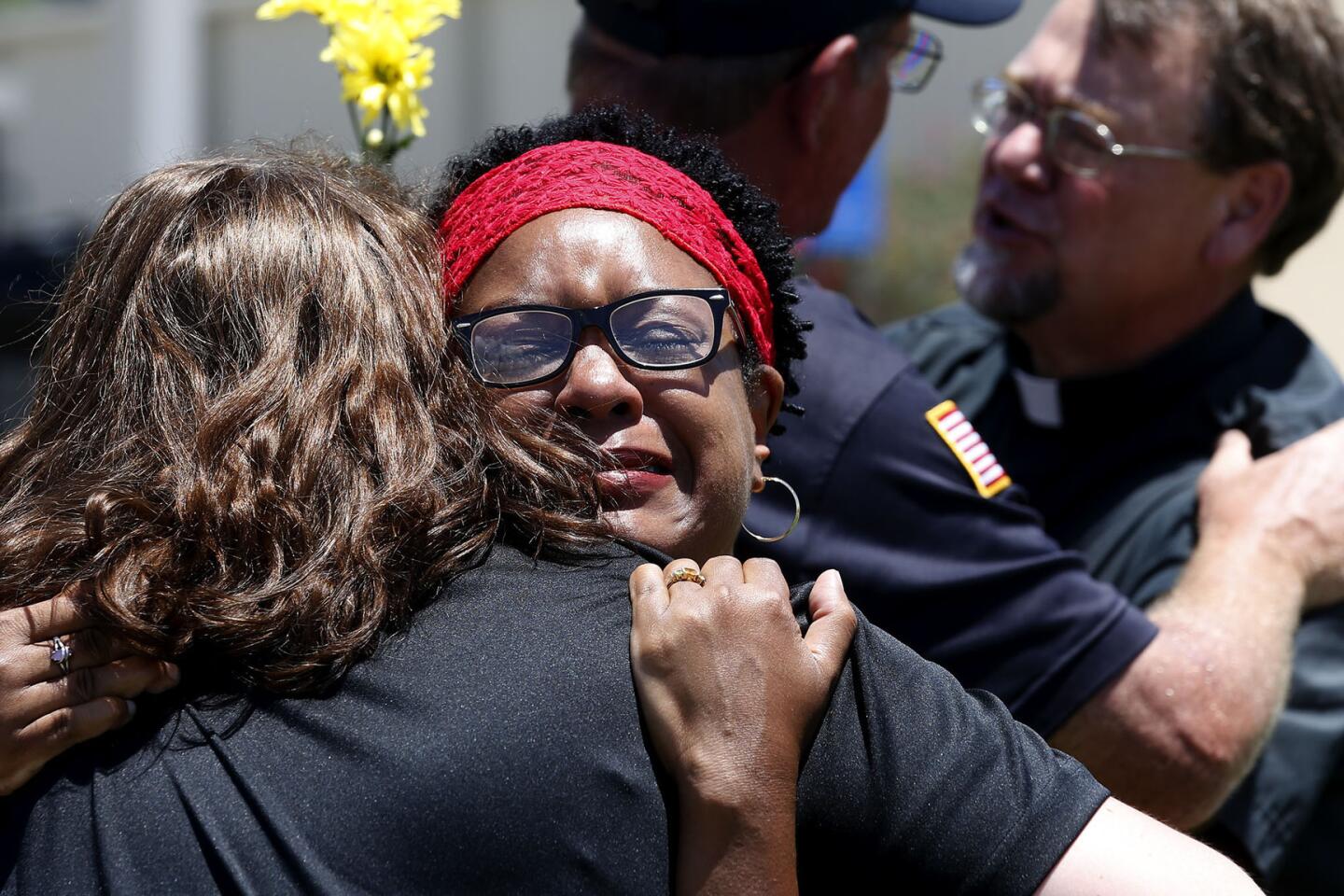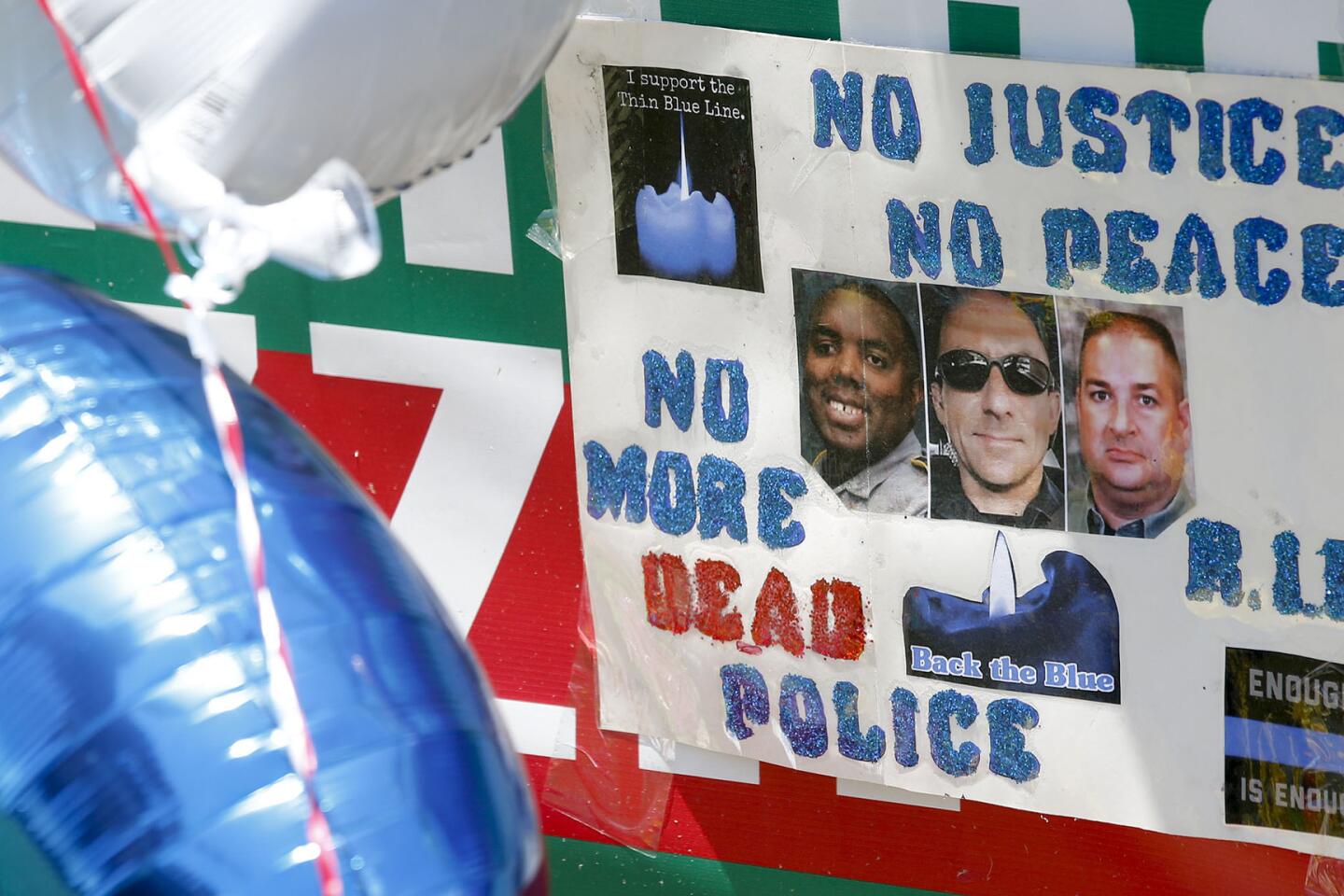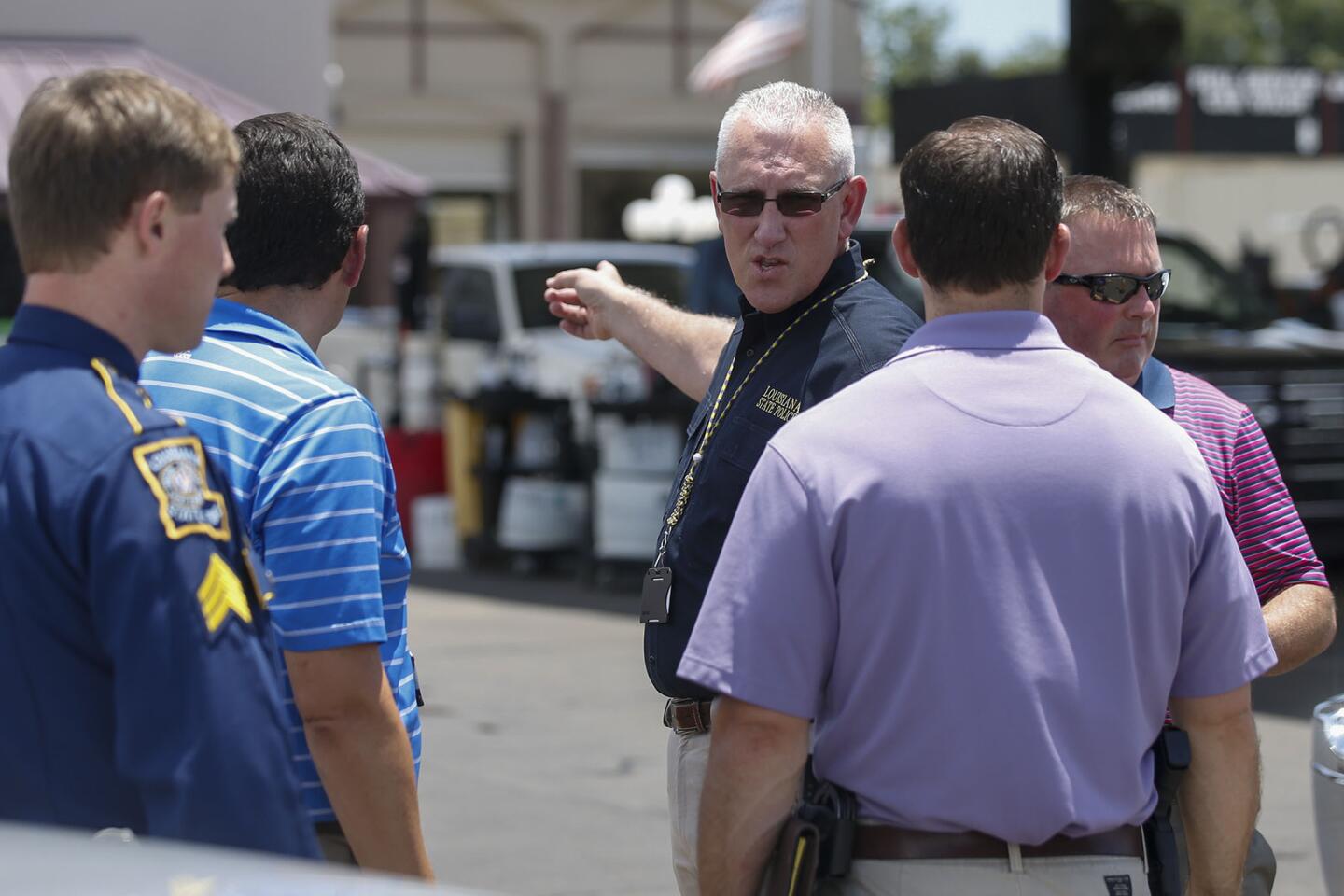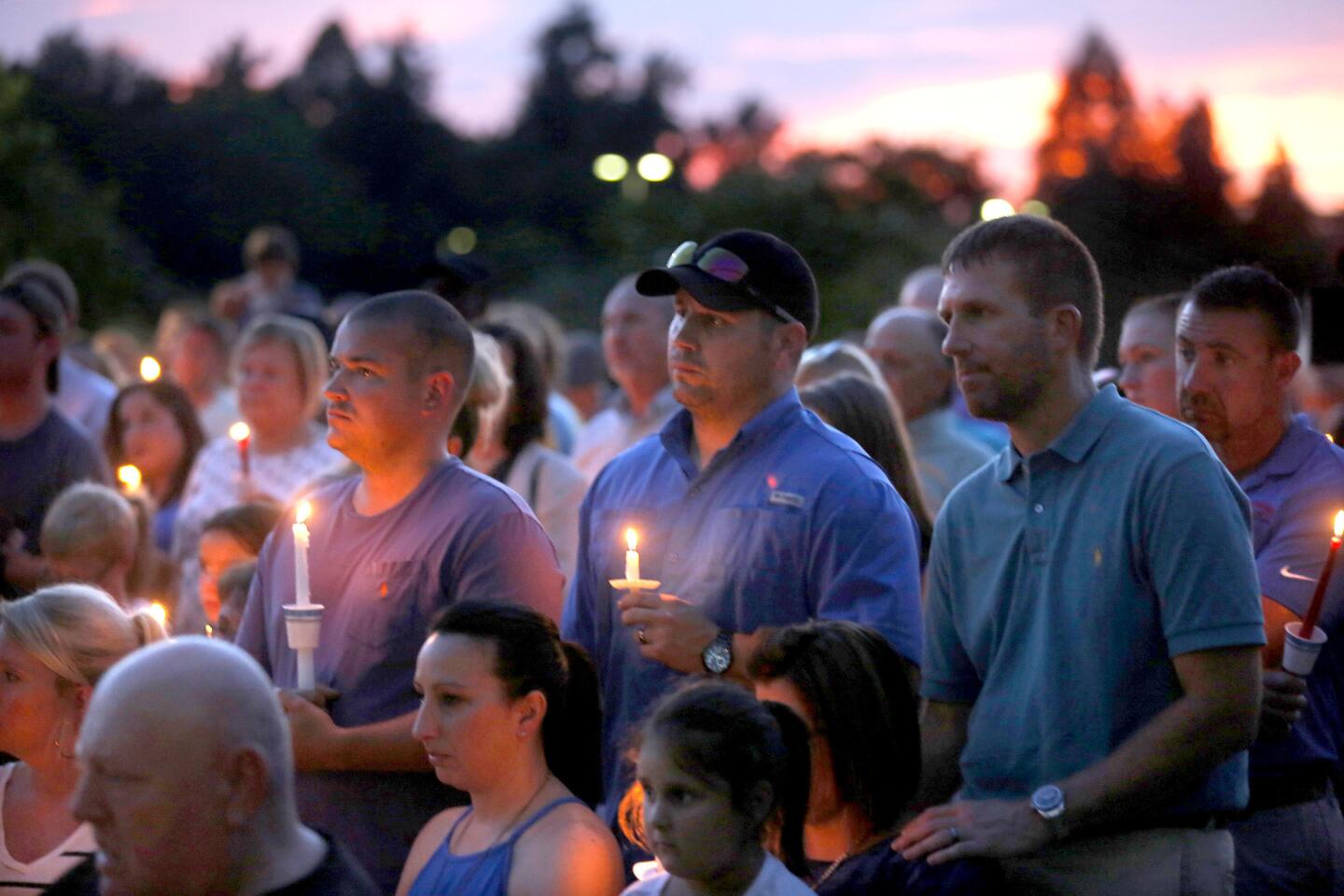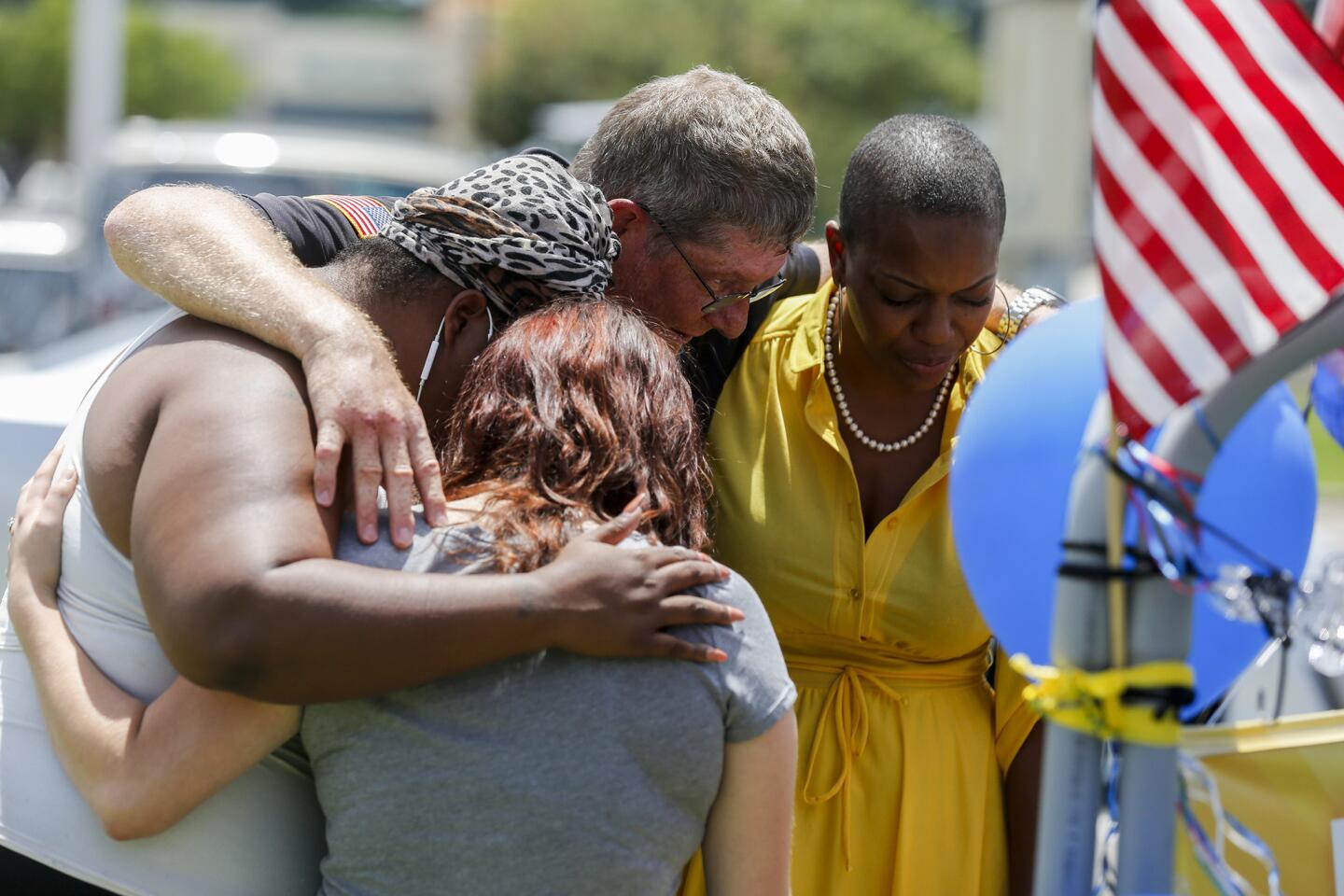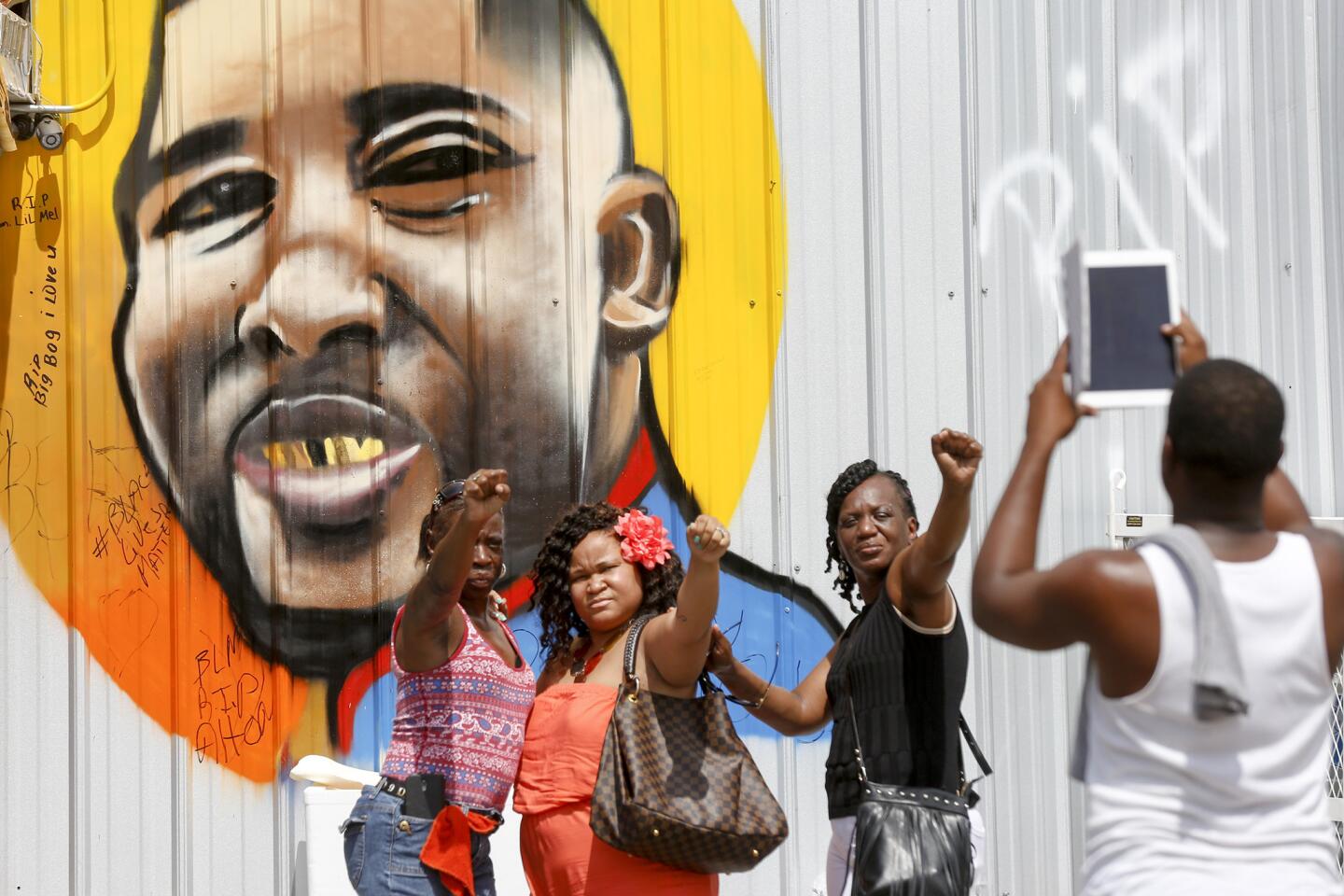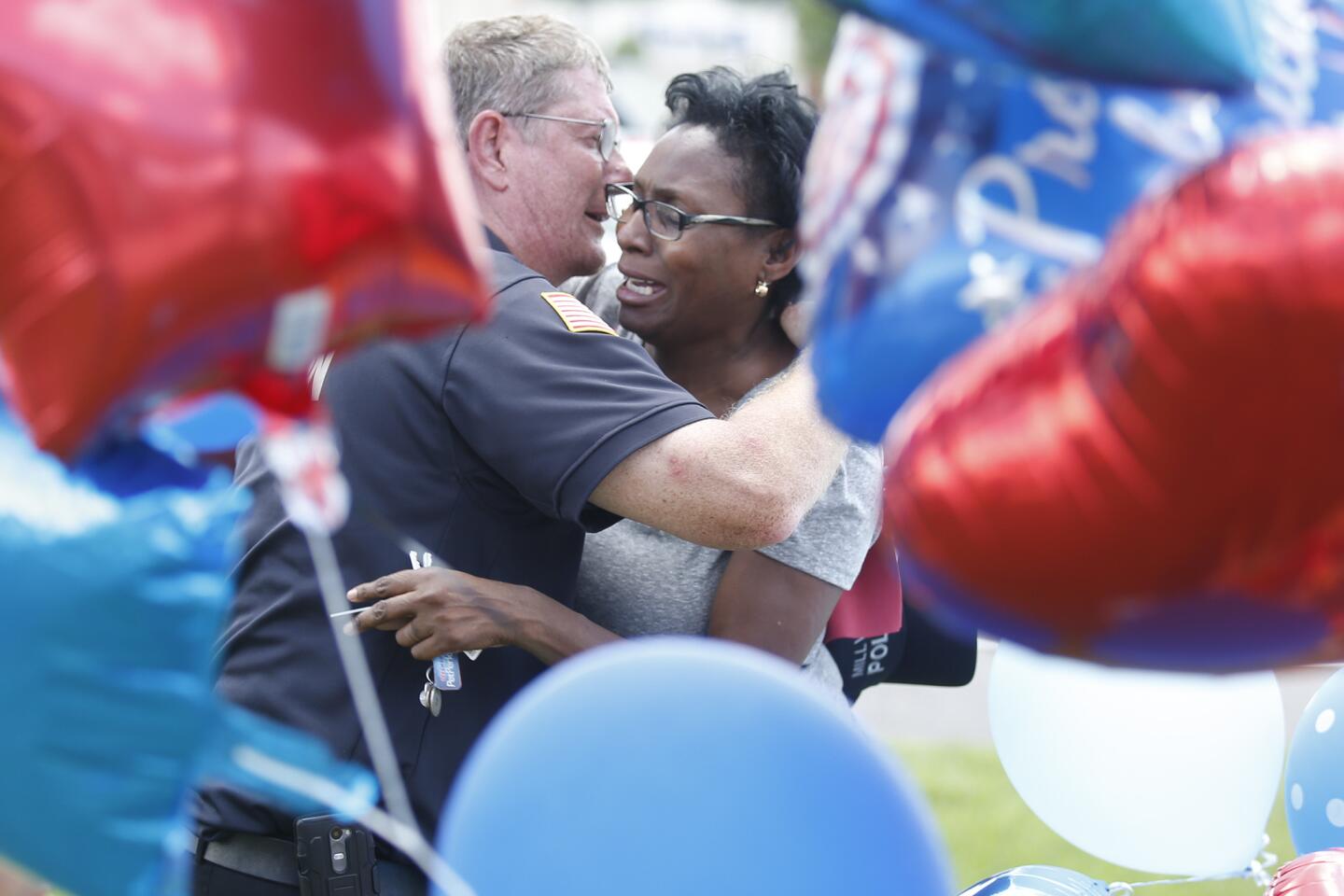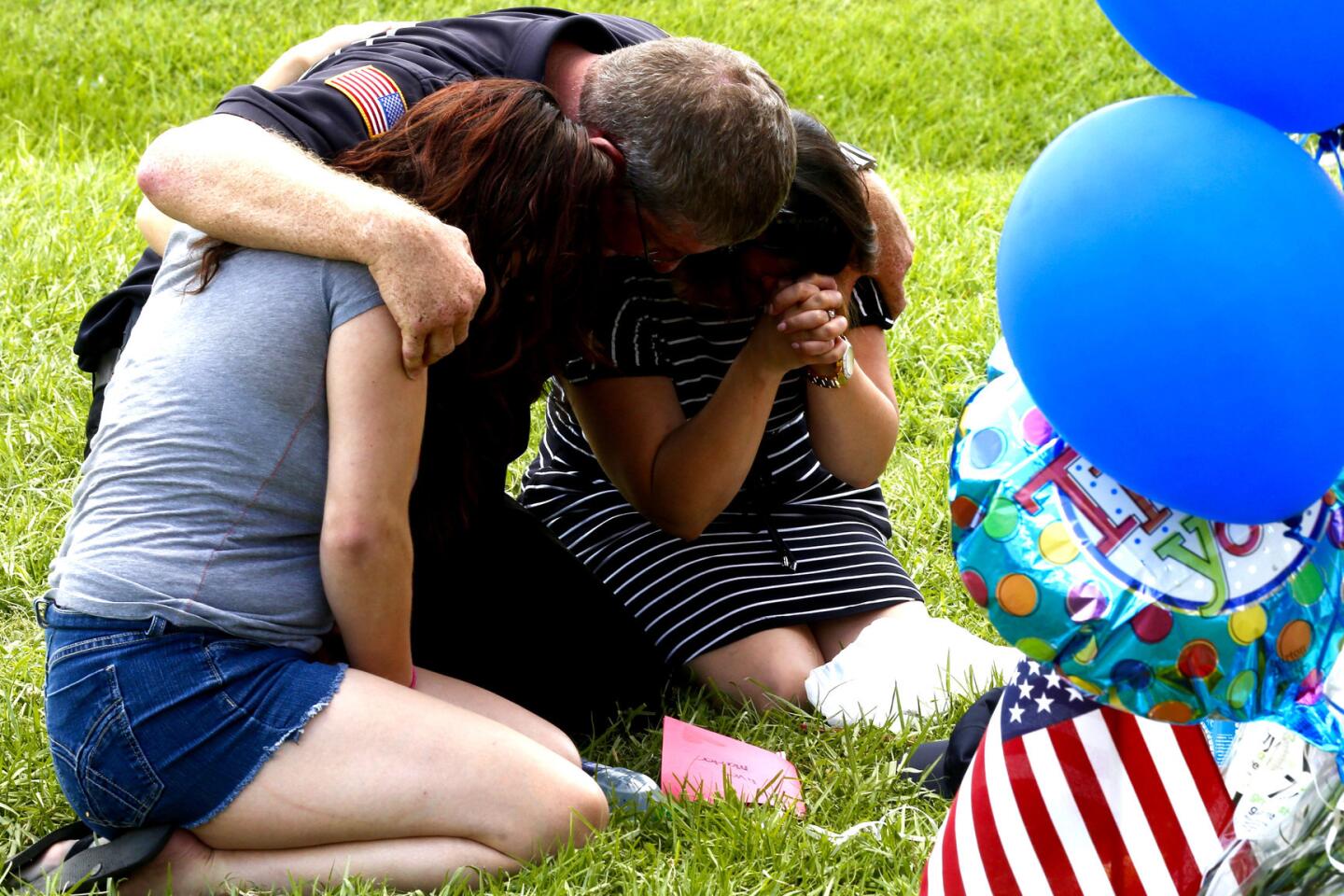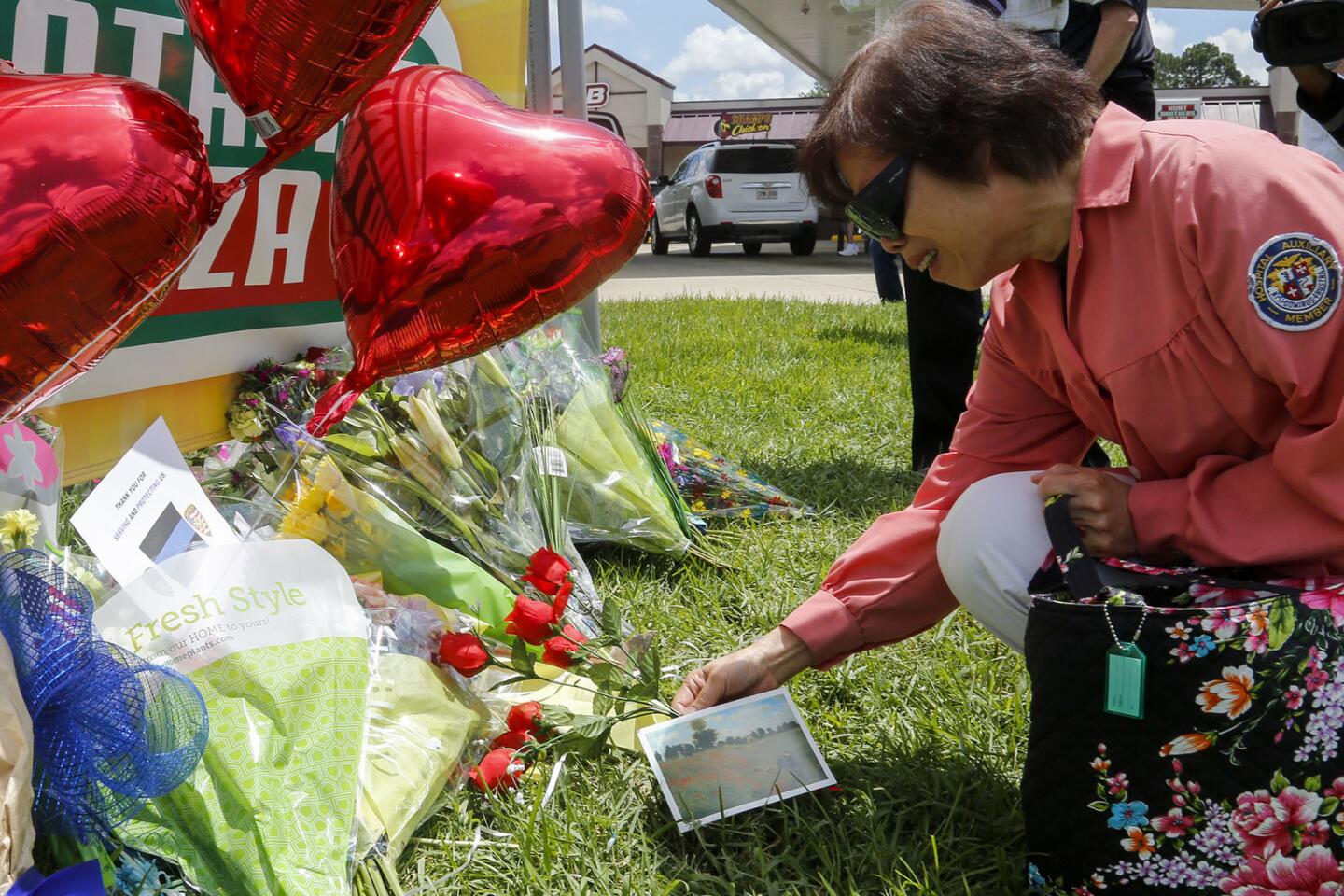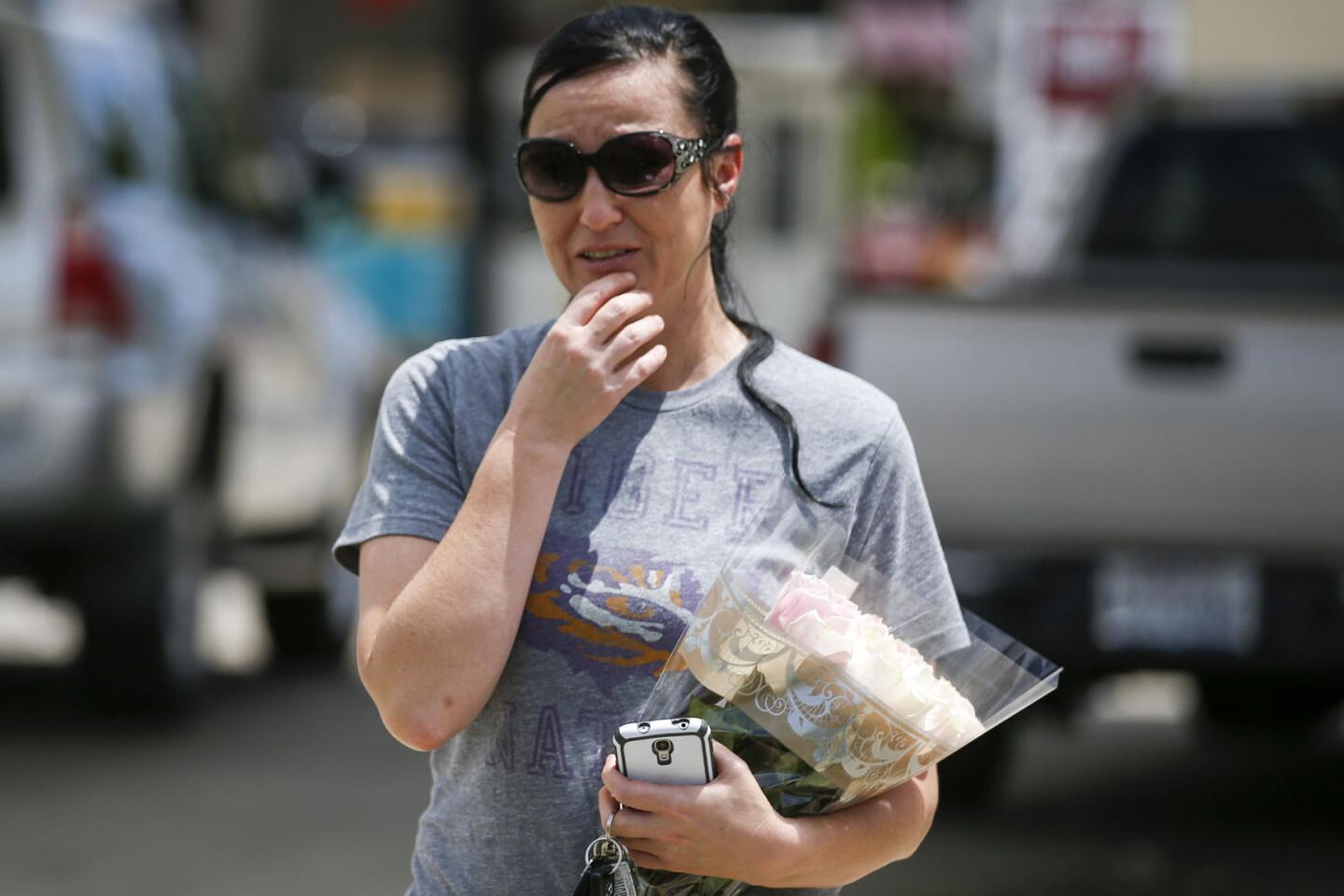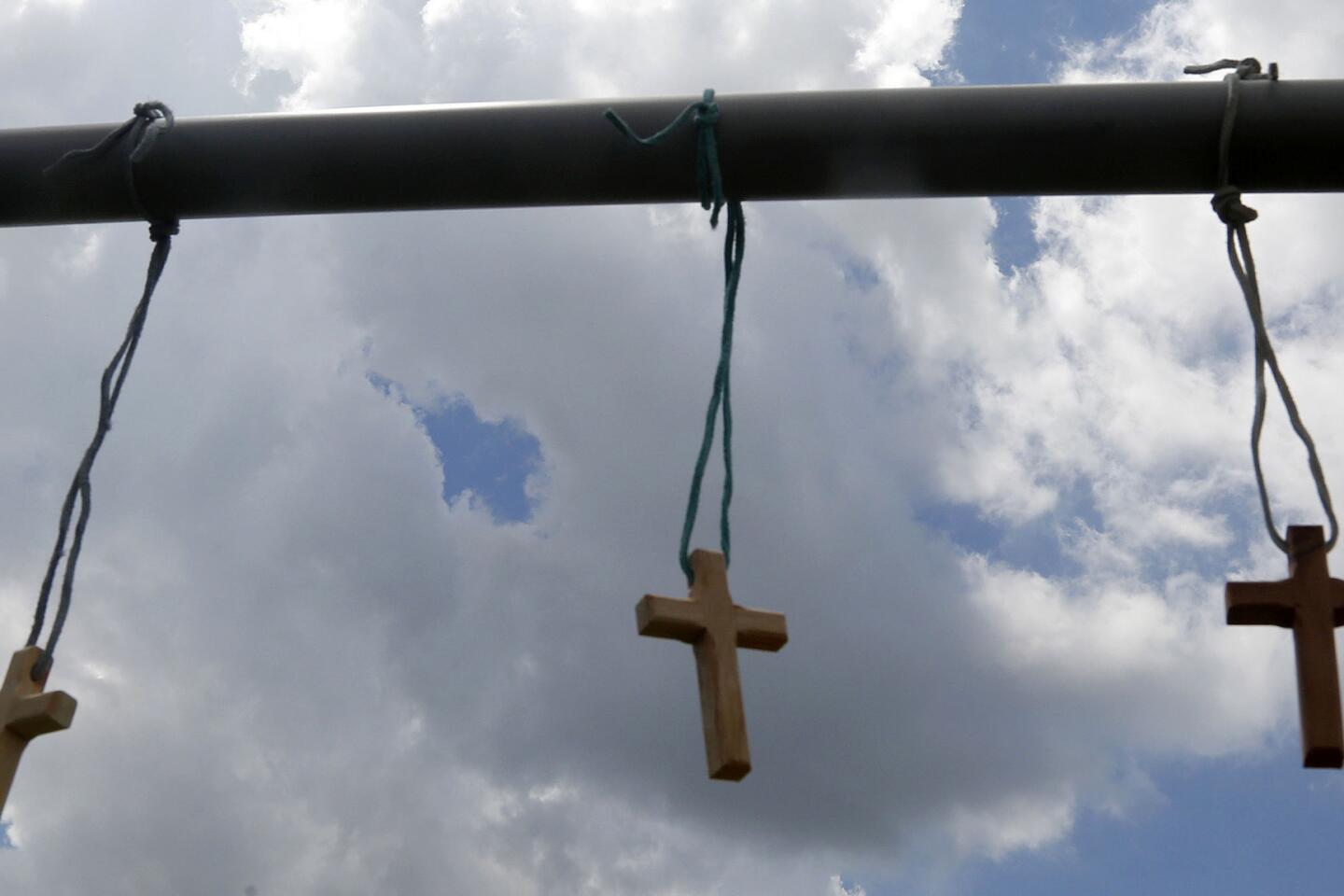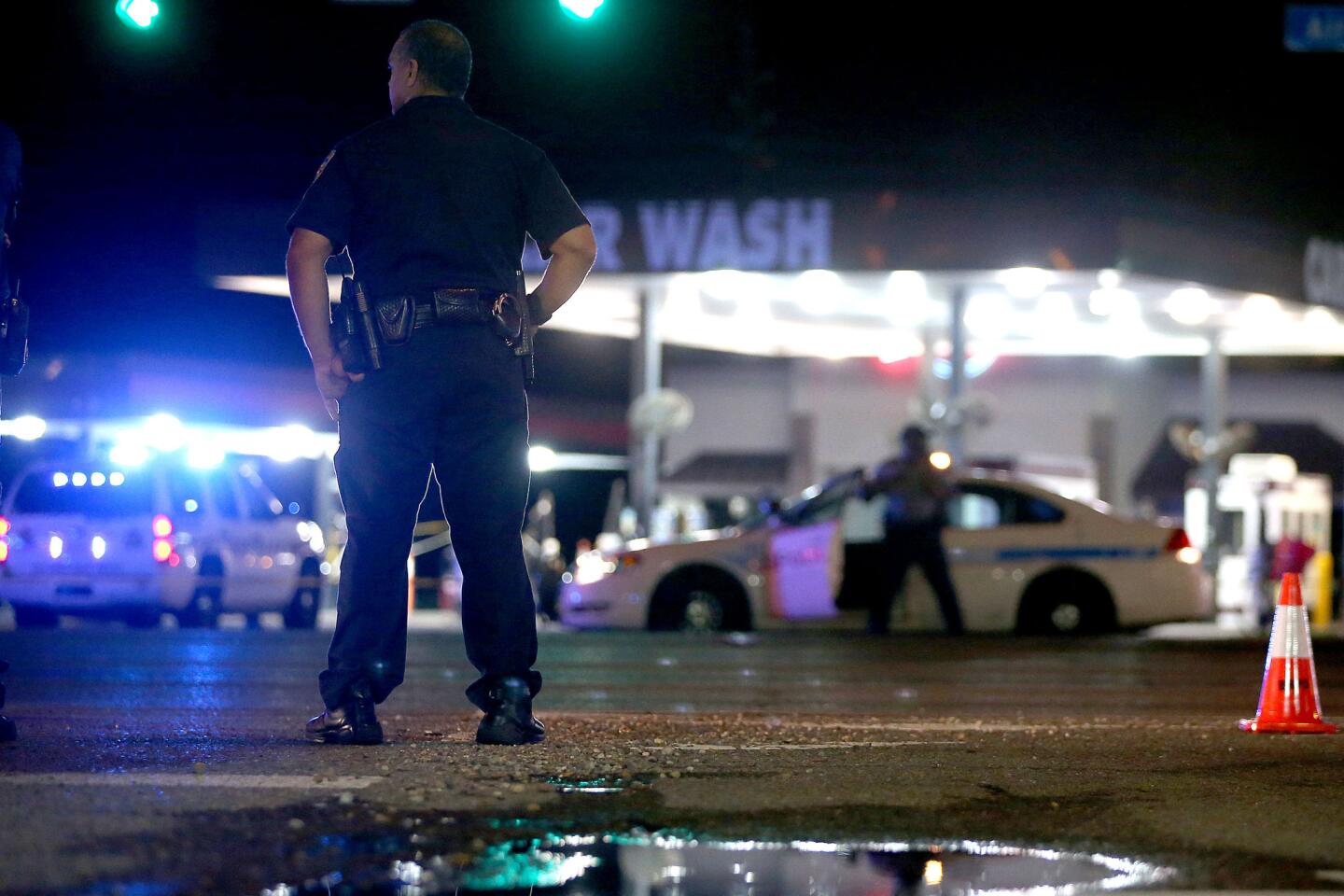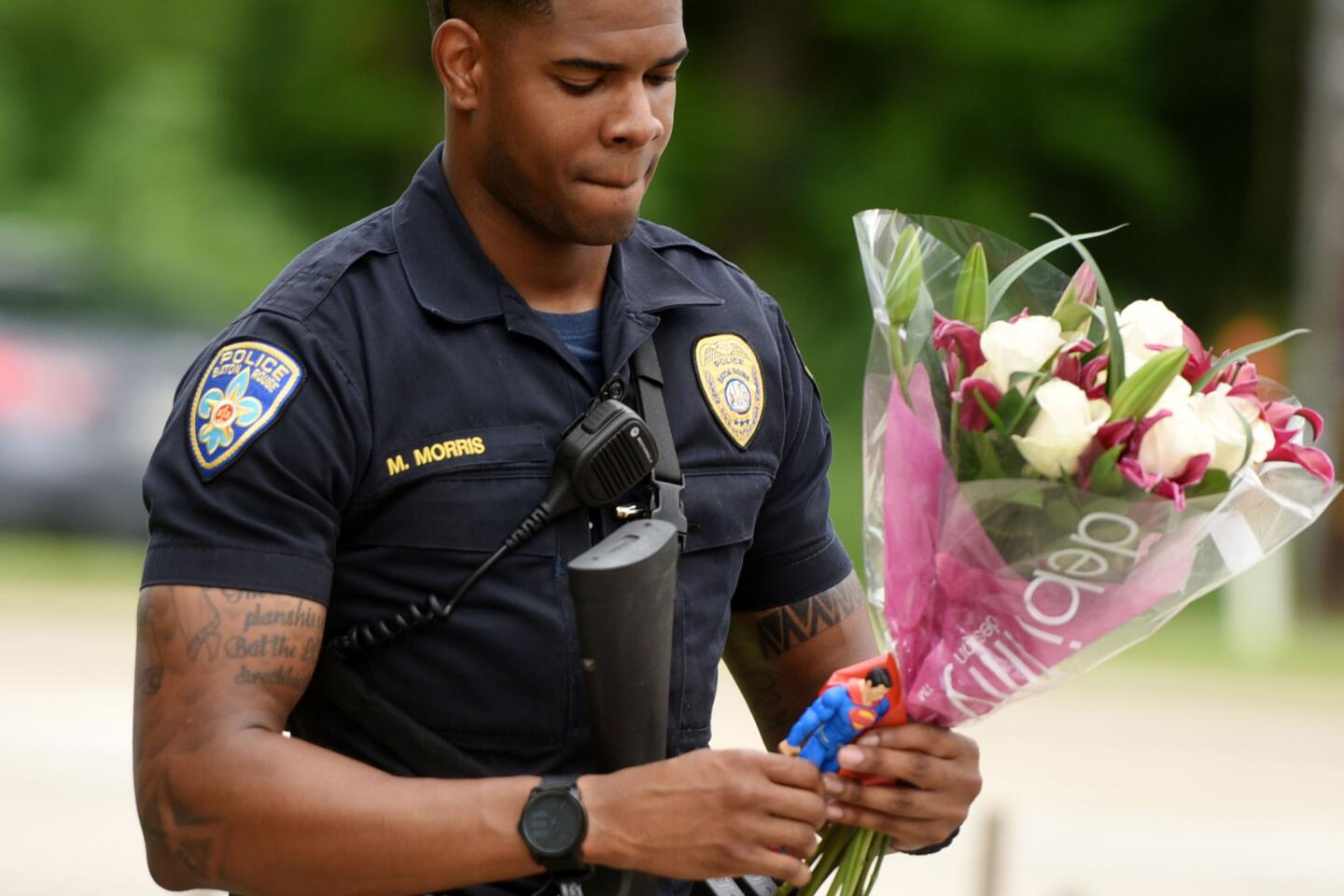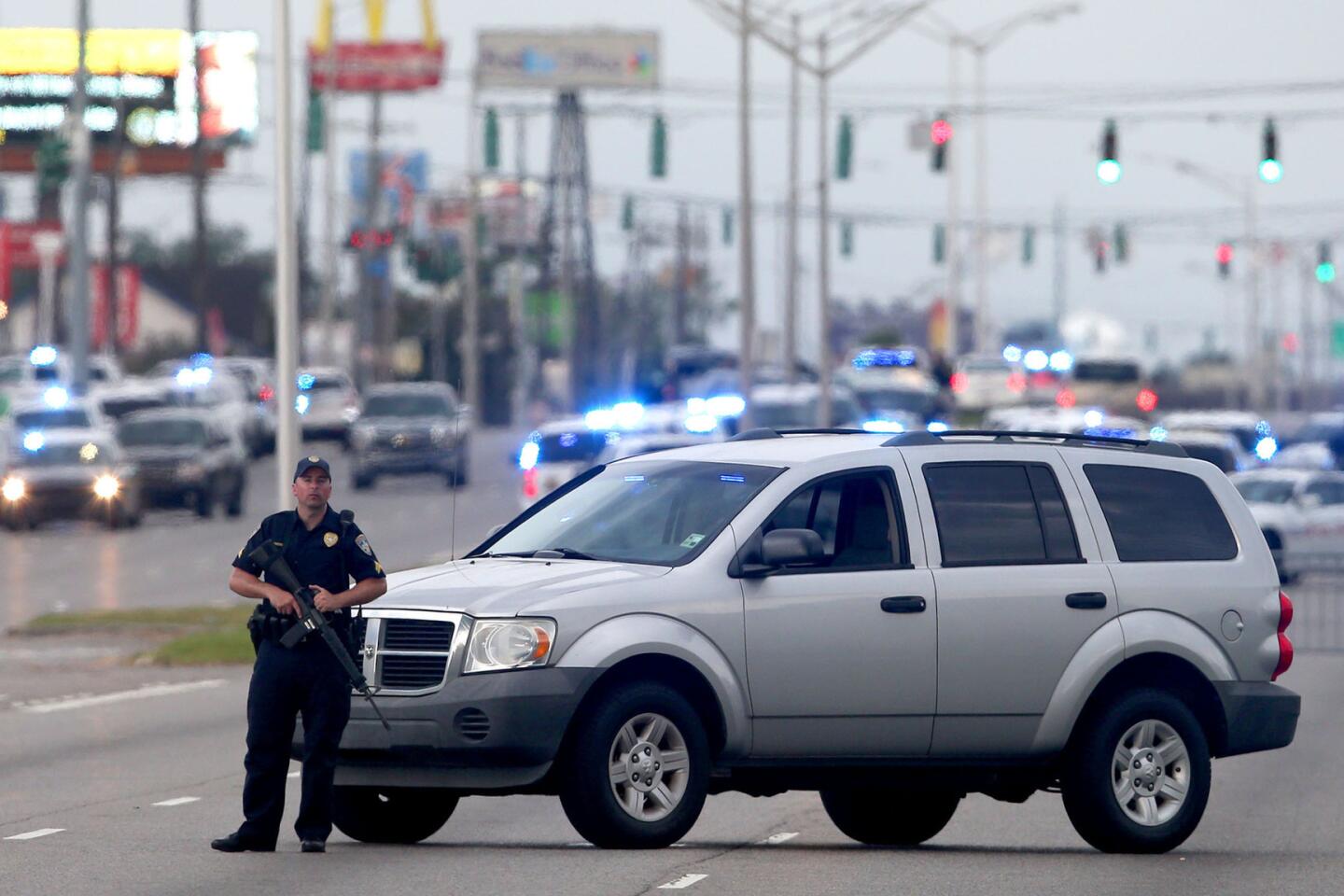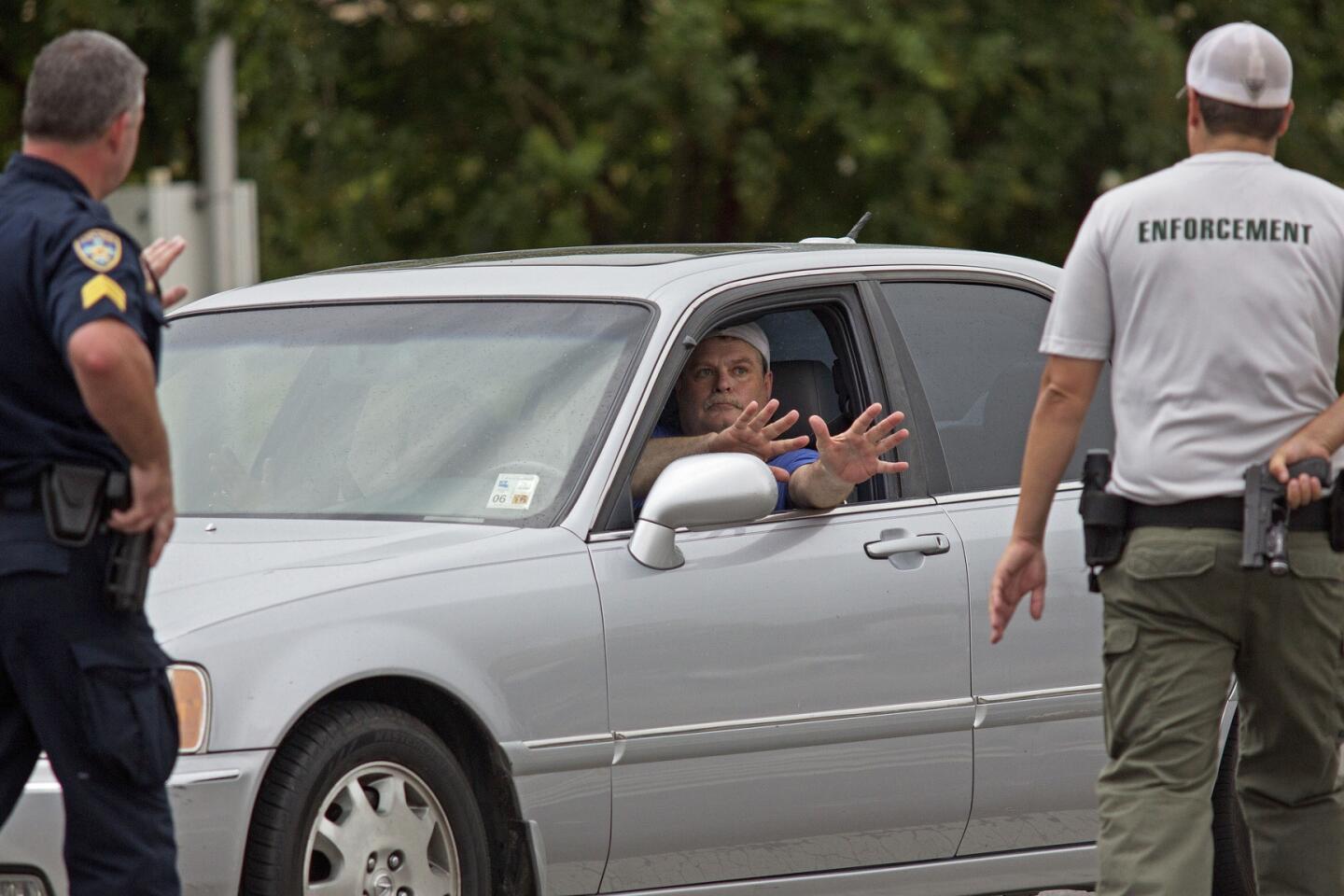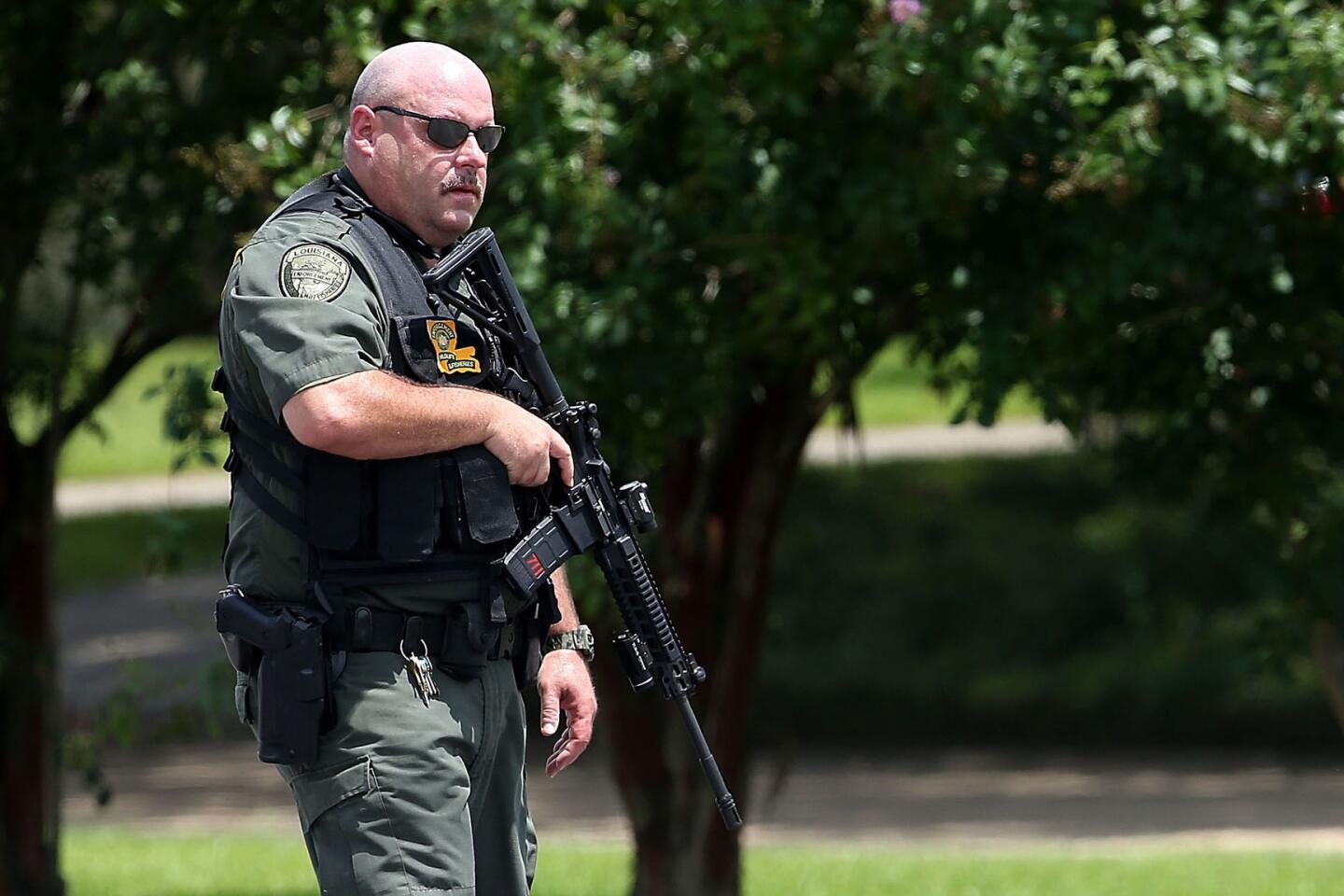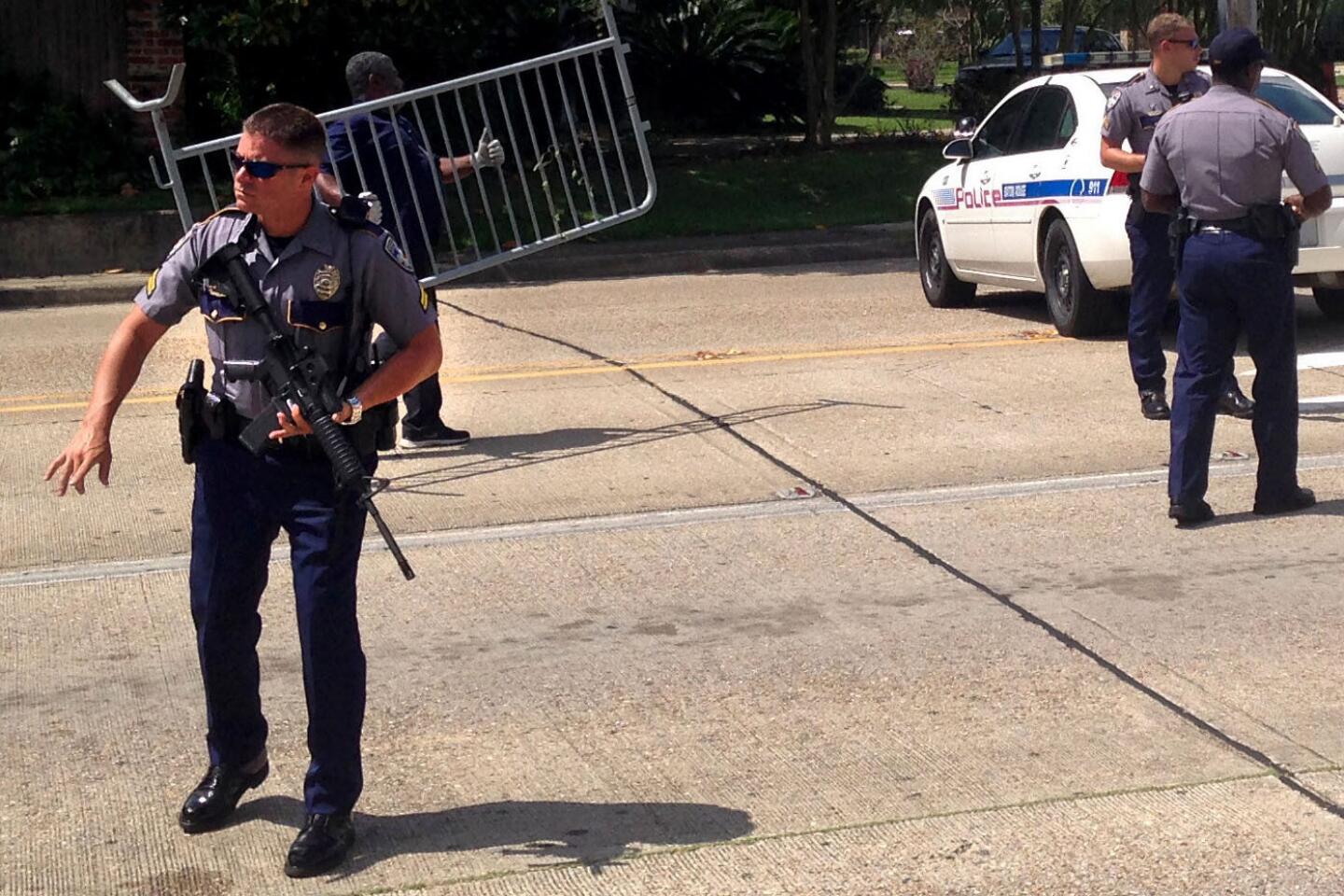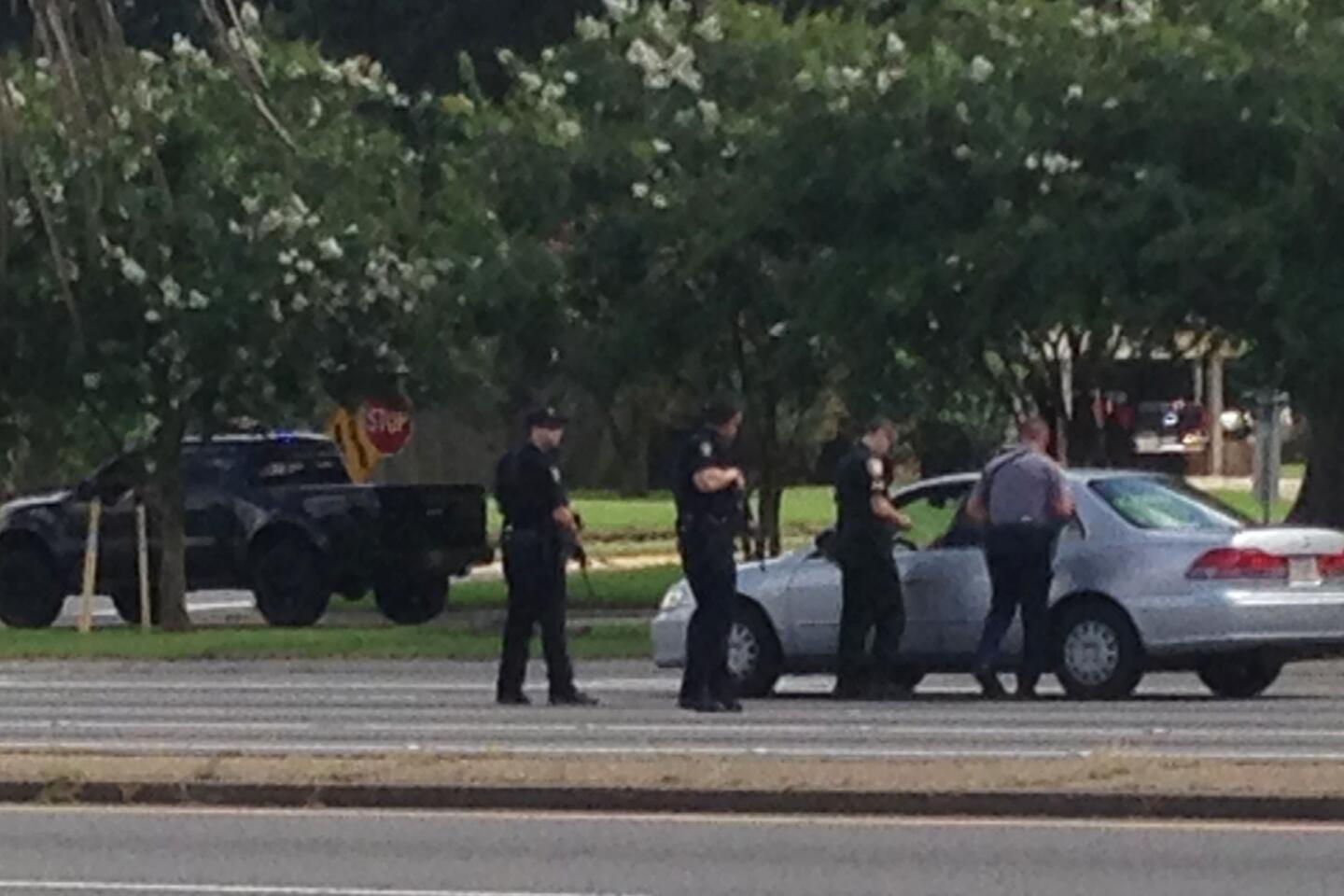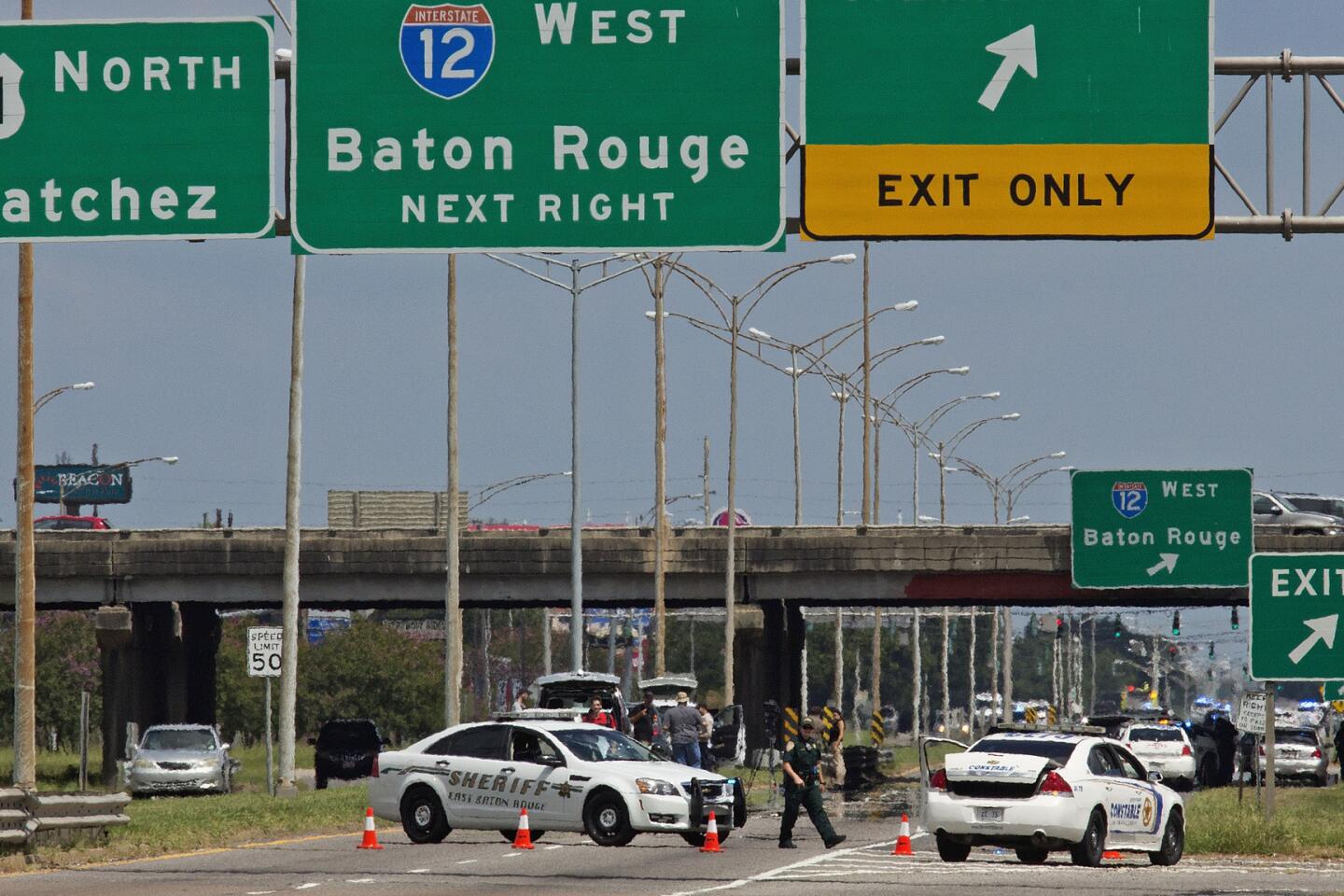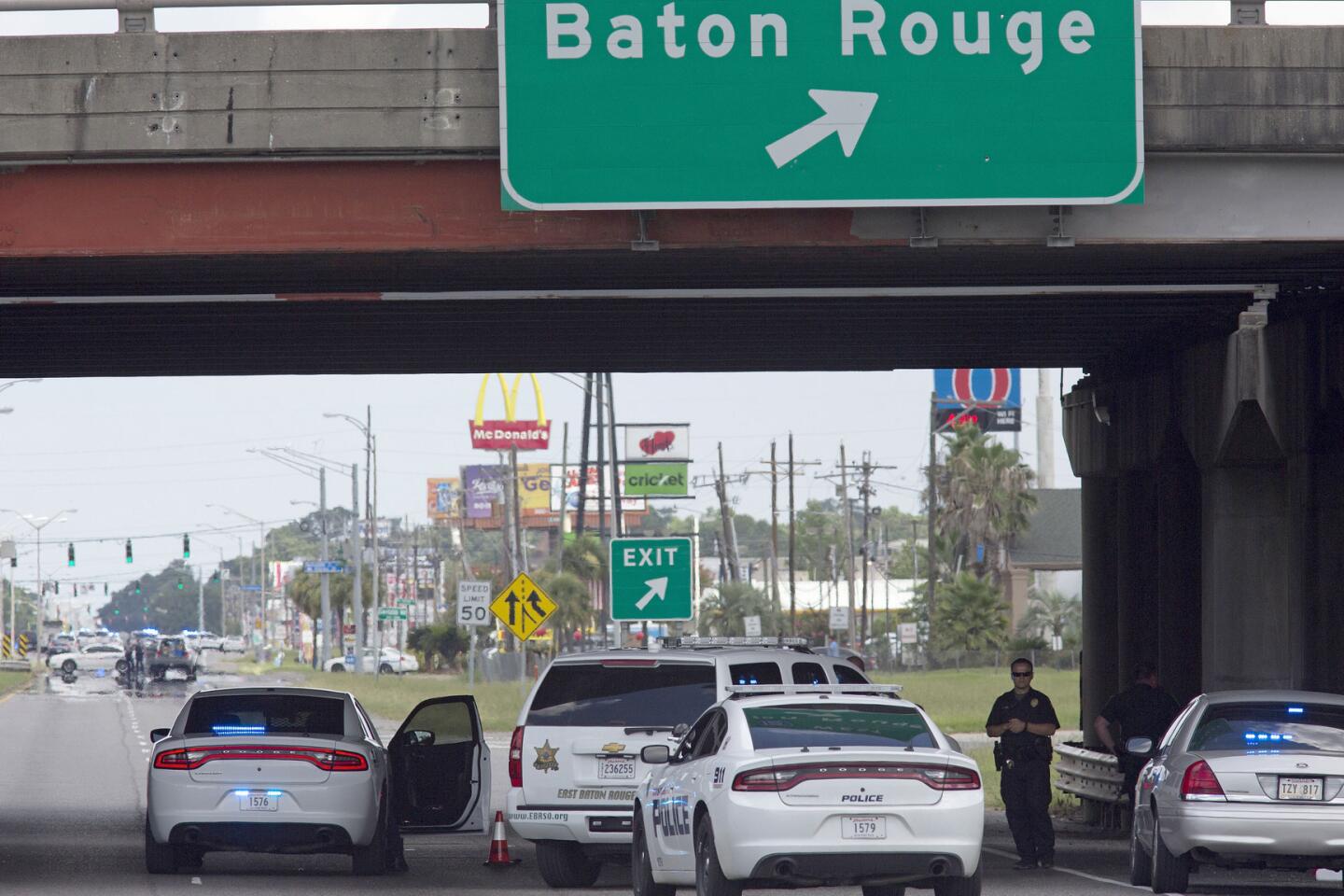Deadly attacks in Dallas and Baton Rouge echo a more dangerous time for police
- Share via
The recent fatal shootings of police in Dallas, Baton Rouge and San Diego recall a treacherous, not-so-distant past for law enforcement, when groups like the Black Panthers called on their supporters to execute officers.
Violence against police had risen steadily throughout the 1960s.
Twenty-eight officers were killed in 1960. The total in 1966 was double that.
When the Black Panthers formed in Oakland in 1966, their espousal of violence was a sharp turn from the peaceful protests of the civil rights era. They said only force could effectively counter a culture of white superiority and police abuse, and called on their supporters to kill cops.
A spin-off group, the Black Liberation Army, did exactly that, launching numerous attacks in the early 1970s. Members were suspected in bombing a police officer’s funeral, and they were charged with killing four officers in New York, Atlanta and San Francisco. The next year, members shot two officers to death on a sidewalk in New York’s East Village.
Slayings of officers peaked in 1973, when 134 died, according to a 1996 report, “Death on Patrol: Felonious Homicides of American Officers,” to the National Institute of Justice.
The militant groups were never responsible for the bulk of the killings, which were committed by a variety of criminals. And although the racial animus toward police didn’t vanish with the disintegration of the black power movement, race wasn’t the prime motivator of the violence in ensuing years.
The report found that from 1980 to 1992, 54.6% of suspected cop killers were white, and 42.8% were black.
By 2005, the number of officers murdered had dropped to 55, and the figure has hovered around that ever since, averaging 49 a year, according to the FBI.
About 10 officers a year have been killed in ambushes — either premeditated or unprovoked attacks — between 2005 and last year.
Motives of the attacks have been varied, along with the races of the killers. In 2012, in LaPlace, La., two deputies were killed by an anti-government group called the Sovereign Citizens. Of the six suspects arrested, five were white and one was black.
In 2013, Riverside Officer Michael Crain was shot at a traffic light by Christopher Dorner, the disgruntled former LAPD officer, who was black. The next year in Las Vegas, a white couple with anti-government leanings shot police Officers Igor Soldo and Alyn Beck while they were eating pizza.
A month later, an officer in Gary, Ind., was shot to death in his patrol car, and a 25-year-old black man was charged with the crime. In September, a white survivalist was accused of fatally shooting a Pennsylvania state trooper as he stepped out of his barracks.
During a period of furious protest over the police shootings of black men, one attack in particular stirred fears among law enforcement that they could face retaliatory ambushes. On Dec. 20, 2014, Ismaaiyl Brinsley, an unemployed black man who reportedly told his ex-girlfriend he wanted to commit suicide, walked up to a patrol car in Brooklyn and shot Officers Rafael Ramos and Wenjian Liu to death, then killed himself.
Hours before, in a post on Instagram, he said he planned to kill two officers and referenced the police killings of Michael Brown in Ferguson, Mo., and Eric Garner in Staten Island, N.Y., as the reason, according to news reports.
Anxiety heightened when an officer pumping gas in Texas was gunned down by a black man in August.
Late Thursday night, two San Diego police gang-detail officers making a traffic stop were shot several times, one mortally wounded, triggering a massive police search into the daylight hours. One suspect is in custody.
The latest shooting added to the other recent attacks, which left eight officers dead in 10 days in Dallas and Baton Rouge—and left many wondering if it was 1973 again.
UPDATES:
This story was updated on July 29, 2016 with news of a fatal attack on police officers in San Diego.
More to Read
Sign up for Essential California
The most important California stories and recommendations in your inbox every morning.
You may occasionally receive promotional content from the Los Angeles Times.
